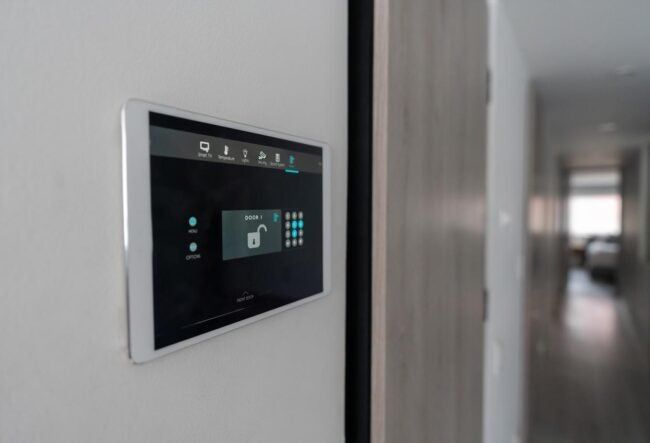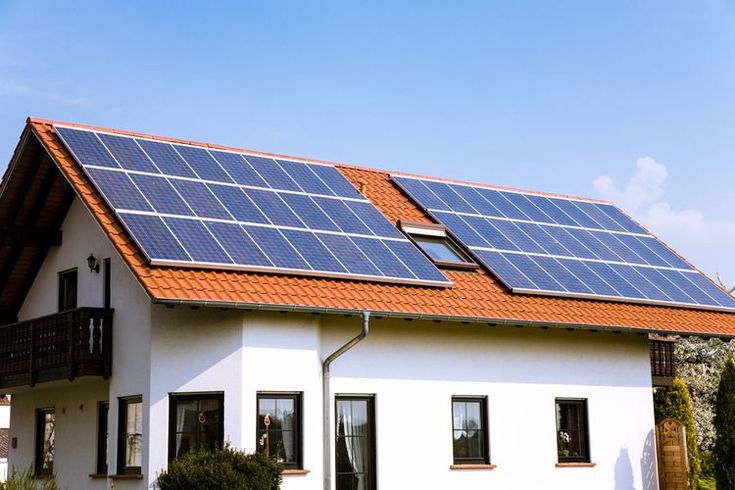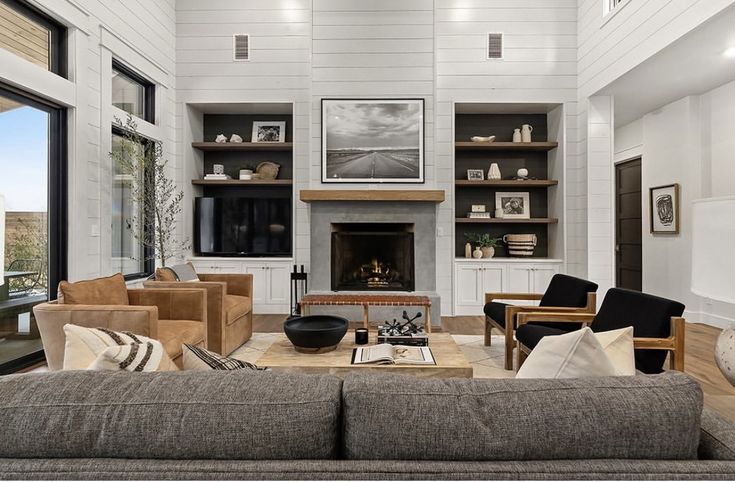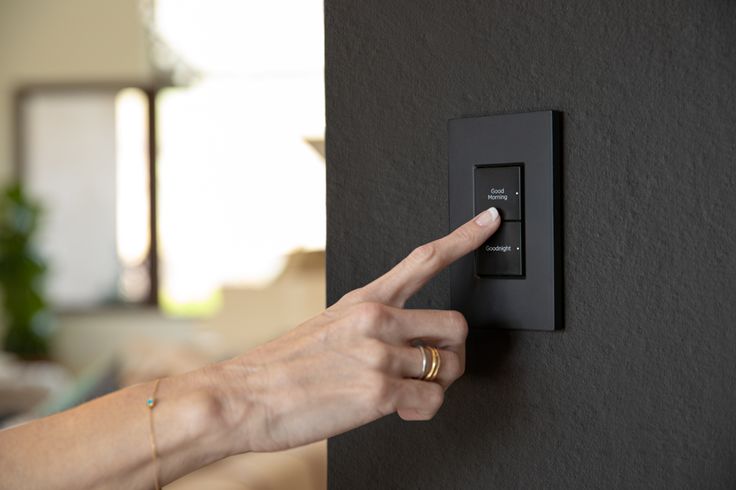How to Secure Your Home with Smart Locks and Alarm Systems: A Comprehensive Guide
How to Secure Your Home with Smart Locks and Alarm Systems: A Comprehensive Guide – In today’s rapidly evolving world, ensuring the safety and security of your home has never been more critical. With the rise of advanced technology, smart locks and alarm systems have become essential tools in safeguarding your property. This guide will provide you with a detailed overview of how to secure your home using these modern devices, offering insights into their features, benefits, and tips for choosing the best systems.
Introduction to Smart Home Security
The concept of home security has shifted dramatically over the past decade. Traditional locks and alarms have given way to intelligent systems that offer enhanced protection and convenience. These smart devices not only deter potential intruders but also integrate seamlessly with other home automation systems to provide a comprehensive safety net.
Smart locks and alarm systems allow homeowners to monitor and control their homes remotely, offering real-time updates and alerts via smartphones. With features like biometric access, video surveillance, and instant notifications, these systems provide peace of mind, knowing your home is safe no matter where you are.
Benefits of Smart Locks and Alarm Systems
Investing in smart security devices offers numerous advantages. Some of the most significant benefits include:
- Enhanced Security: Smart locks and alarm systems use encrypted technology to provide higher levels of security compared to traditional systems. They are difficult to tamper with, reducing the risk of break-ins.
- Remote Access: With smart technology, you can lock and unlock your doors or arm your alarm system from anywhere using a smartphone app. This is particularly useful for those who travel frequently or have children who might forget to lock the door.
- Real-Time Notifications: These systems send instant alerts to your phone when suspicious activity is detected. Whether it’s an attempt to unlock the door or movement in your yard, you’re notified immediately.
- Customizable Settings: You can program smart security systems to suit your needs. For instance, you can set the alarm to go off at specific times or allow temporary access to trusted individuals like housekeepers or delivery personnel.
- Integration with Smart Home Systems: Many smart locks and alarms can be integrated with other home automation devices like smart lights, thermostats, and cameras, creating a cohesive and highly functional security ecosystem.
- User-Friendly: While advanced, these systems are designed to be intuitive and easy to use. Most come with clear installation instructions and user-friendly mobile apps.
Choosing the Right Smart Locks for Your Home
Smart locks are available in various designs and with different features. When selecting the best smart lock for your home, consider the following factors:
1. Type of Smart Lock
Smart locks come in different formats, such as:
- Keypad locks: These require a numerical code to unlock. They’re ideal for families, as you can assign different codes to each family member.
- Biometric locks: These use fingerprints or facial recognition for access. They offer the highest level of security and are convenient, as there’s no need to carry keys or remember a code.
- Wi-Fi or Bluetooth locks: These locks are controlled through a smartphone app. Wi-Fi locks can be accessed from anywhere, while Bluetooth locks have a more limited range.
2. Power Source
Smart locks typically run on batteries. Consider how long the batteries last and whether the lock has features to notify you when power is low. Some models come with backup power options, such as a USB port for emergency charging.
3. Integration with Other Devices
If you already have a smart home system in place (such as Amazon Alexa, Google Home, or Apple HomeKit), make sure your smart lock is compatible with it. This allows for seamless control and voice commands.
4. Security Features
Look for smart locks that offer encrypted communication and additional safety features, such as automatic locking after a certain period. Locks with tamper detection and built-in alarms provide extra layers of security.
5. Ease of Installation
Some smart locks are easier to install than others. Check whether the lock fits your existing door hardware or if you’ll need to modify it. Many smart locks can be retrofitted onto traditional deadbolts.
Choosing the Best Alarm Systems for Your Home
When it comes to selecting an alarm system, several factors come into play. Here’s what to consider:
1. Type of Alarm System
- Monitored Alarm Systems: These are connected to a professional monitoring service that contacts you or the authorities when the alarm is triggered. They offer 24/7 protection but often come with a monthly fee.
- Unmonitored Alarm Systems: These trigger a loud siren when activated but don’t notify the police. They’re a more affordable option but rely on neighbors or passersby to react to the sound.
2. Sensors
Different sensors are available, depending on the type of coverage you need:
- Motion Sensors: Detect movement within the home.
- Door/Window Sensors: Trigger the alarm when a door or window is opened.
- Glass Break Sensors: These activate when the sound of glass breaking is detected.
- Smoke and Carbon Monoxide Sensors: Many alarm systems integrate fire and gas leak detection for comprehensive safety.
3. Smart Features
Choose a system that offers remote monitoring and control through a smartphone app. Look for systems with mobile alerts, video surveillance, and the ability to arm or disarm the alarm from anywhere.
4. Video Monitoring
Many modern alarm systems come with security cameras that provide real-time video footage of your property. Some systems also include two-way communication, allowing you to speak to whoever is at your door.
5. Scalability
Make sure the alarm system you choose can grow with your needs. Opt for a system that allows you to add more sensors or cameras as required.
6. Backup Power
A good alarm system should have backup power options in case of outages. Look for systems with battery backup to ensure your home remains protected even during a blackout.
Integrating Smart Locks and Alarm Systems
For the best security setup, it’s essential to integrate your smart locks and alarm systems. Here’s how to create a cohesive security system:
1. Use a Central Hub
Most smart home ecosystems, such as Apple HomeKit, Amazon Alexa, or Google Home, allow you to connect your smart locks and alarms to a central hub. This way, you can control all devices from one platform, simplifying management.
2. Automated Triggers
You can set up automated triggers based on your routine. For example, when you lock your smart lock at night, your alarm system can automatically arm itself. Similarly, when you unlock the door, the alarm disarms.
3. Voice Control
Many smart home systems allow for voice control of both locks and alarms. This feature is especially convenient if you need to lock your door or arm the alarm hands-free.
4. Mobile Integration
Both smart locks and alarms can send notifications to your phone, allowing you to stay informed of any security breaches in real-time. You can also manage guest access or disarm the alarm remotely if needed.
Conclusion
Securing your home with smart locks and alarm systems is a highly effective way to protect your family and belongings. These systems offer convenience, flexibility, and peace of mind, ensuring that your home is safe from both intruders and environmental hazards like fire or gas leaks. When choosing the right system, consider factors like integration, power sources, and scalability to build a personalized security setup that suits your needs.
By staying informed about the latest trends in smart home security, you can take proactive steps to safeguard your property and enjoy the many benefits that these advanced technologies have to offer.
Tips for Maximizing the Effectiveness of Your Smart Locks and Alarm Systems
While smart locks and alarm systems offer impressive security features, optimizing their effectiveness requires careful setup and ongoing management. Here are some tips to ensure you get the most out of your investment:
1. Regularly Update Software
Just like smartphones and computers, smart locks and alarm systems rely on software to function properly. Manufacturers often release updates that enhance security, fix bugs, and introduce new features. Set your devices to automatically update or check periodically for software updates to ensure your system remains up-to-date and secure.
2. Use Strong Passwords and Two-Factor Authentication
When setting up your smart security devices, it’s important to use strong, unique passwords to protect your accounts. Additionally, enable two-factor authentication (2FA) wherever possible. 2FA adds an extra layer of security by requiring a second form of verification (like a code sent to your phone) before granting access to your system.
3. Monitor Activity Logs
Most smart locks and alarm systems provide logs that show when and how your devices were used. Regularly checking these logs allows you to spot any unusual activity, such as repeated failed login attempts or access at odd times, which could indicate a security threat.
4. Set Custom Alerts for Specific Events
Modern smart security systems allow you to customize notifications. For example, you can set an alert for when the front door is opened during work hours or when your alarm system detects movement in a specific area of the house. These personalized alerts help you keep track of key events without being overwhelmed by unnecessary notifications.
5. Regularly Test Your System
Test your smart locks and alarm systems regularly to ensure they are functioning as expected. For alarm systems, this includes testing motion sensors, door/window sensors, and video cameras. For smart locks, test different access methods (keypad, fingerprint, app control) to ensure they are responsive and secure.
6. Change Access Codes and Permissions Regularly
For added security, consider updating access codes or fingerprint access regularly. If you’ve provided temporary access to service providers or guests, make sure to revoke their access once it’s no longer needed. Many smart locks allow you to set time-based access or generate single-use codes, which can enhance security for short-term visitors.
7. Position Cameras Strategically
If your alarm system includes security cameras, ensure they are positioned in key areas around your property, such as entry points (doors and windows), the driveway, and blind spots. This provides comprehensive coverage and ensures no part of your property is left vulnerable.
8. Ensure Backup Power is in Place
Smart security systems often rely on electricity or Wi-Fi, which means power outages or internet disruptions can compromise your security. Ensure your system has a backup power source, such as batteries or a solar-powered backup, and check them regularly. Some systems may also have a cellular connection as an emergency communication option when the Wi-Fi is down.
9. Maintain Proper Wi-Fi Security
Since most smart devices rely on Wi-Fi for communication, ensuring your home Wi-Fi network is secure is essential. Use a strong password for your network, and enable encryption (WPA3, if available). You might also consider creating a separate Wi-Fi network just for your smart devices to isolate them from other internet traffic.
Future Trends in Smart Home Security
Smart locks and alarm systems continue to evolve, with new trends and technologies enhancing home security. Here are some of the most promising future developments:
1. AI-Powered Surveillance
Artificial intelligence (AI) is playing an increasingly important role in home security. AI-powered cameras can analyze footage to identify potential threats, such as recognizing faces or differentiating between a human and an animal. This reduces false alarms and allows the system to respond more intelligently to actual threats.
2. Voice-Activated Security
As voice assistants like Amazon Alexa and Google Assistant become more integrated with home automation systems, voice-activated security features are becoming more common. In the future, you may be able to lock or unlock your doors, arm your alarm, or check the status of your home security system simply by giving a voice command.
3. 5G Connectivity
The rise of 5G technology is expected to revolutionize smart home security. With faster internet speeds and lower latency, smart locks and alarms will be able to communicate more quickly and reliably. This will also make remote monitoring and control more seamless, allowing homeowners to stay connected to their security systems in real time, even in areas with weak Wi-Fi signals.
4. Biometric Advancements
While fingerprint and facial recognition are already widely used in smart locks, future systems may incorporate even more advanced biometric technologies. For example, vein pattern recognition and heartbeat authentication are being developed as alternatives to current biometric methods, offering even greater security.
5. Integration with Smart Cities
As cities become smarter, home security systems may begin to integrate with broader urban infrastructure. For instance, local law enforcement or neighborhood watch groups could be alerted in real-time if a significant security breach occurs in your area, increasing the speed of response.
Balancing Convenience and Security
One of the key benefits of smart locks and alarm systems is the convenience they offer. However, it’s important to balance this convenience with strong security measures to avoid vulnerabilities. For example, while allowing remote access to your home for deliveries or visitors is convenient, ensure you have robust security protocols in place, such as time-restricted access codes and motion alerts.
Always consider the implications of integrating multiple devices into your security system. Each additional device—whether it’s a camera, lock, or alarm sensor—represents another point of entry that could be exploited by cybercriminals. Keeping your systems updated, using encrypted connections, and maintaining secure login credentials are critical to minimizing risk.
Conclusion: The Future of Home Security is Smart
Smart locks and alarm systems are revolutionizing how we protect our homes, offering both advanced security features and user-friendly interfaces. By choosing the right devices, ensuring they are properly installed, and maintaining them with regular updates and monitoring, you can create a secure, modern home environment that adapts to your lifestyle.
The ability to control and monitor your home from anywhere in the world not only enhances security but also offers unparalleled peace of mind. As technology continues to advance, homeowners will have even more tools at their disposal to safeguard their properties. By staying informed about the latest trends and best practices, you can ensure that your home remains a secure and comfortable haven for you and your family.
In conclusion, integrating smart locks and alarm systems into your home is more than just a trend—it’s a practical, future-proof investment in your safety.






